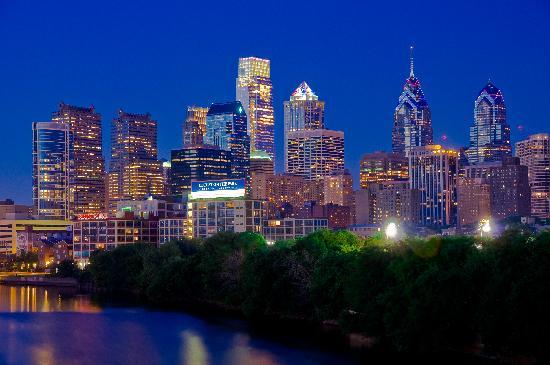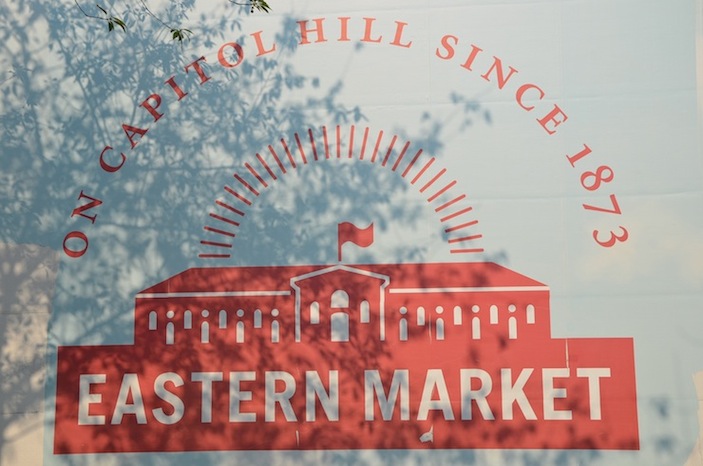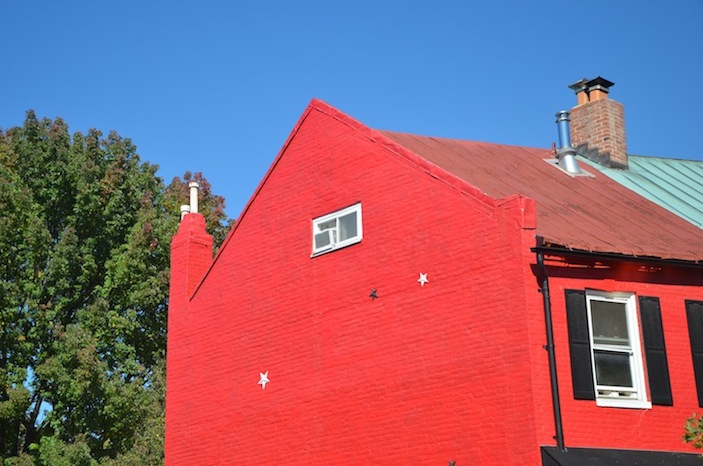Posts Tagged ‘IDwashingtondc’
IDwashingtondc: Roosevelt’s Values
IDwashingtondc: Capitol
IDvirginia: Auto Traffic Only!
IDwashingtondc: The District’s Surprisingly Diverse Musical Heritage
Washington, D.C. is synonymous with politics. Black tie here, red tie there, navy suit everywhere. But as we’ve discussed before, the city behind the white-columned buildings that garner most of the attention has plenty of gems to uncover. Among those is the musical history of the city that produced a wide range of musicians, ranging from John Philip Sousa to Duke Ellington to Thievery Corporation.
We have put together a list of 32 singles that have defined the surprisingly diverse D.C. music scene, which even created its own genre of music that remains a D.C. secret today: Go-Go (you can get a sample of this genre from Chuck Brown, Junk Yard Band, Rare Essence and Backyard Band below).
Going in chronological order…
1886–John Philip Sousa: Stars and Stripes Forever
1888–John Philip Sousa: Semper Fidelis
1931–Edward Kennedy “Duke” Ellington: In A Sentimental Mood (featuring John Coltrane)
1931–Duke Ellington: It Don’t Mean A Thing (If It Ain’t Got That Swing)
1932–Duke Ellington: Sophisticated Lady
1939–Duke Ellington: Take the “A” Train
1973–Roberta Flack: Killing Me Softly
1974–Roberta Flack: Feel Like Making Love
1978–Chuck Brown: Bustin’ Loose
1986–Junk Yard Band: Sardines
1987–Chuck Brown: It Don’t Mean A Thing (If It Don’t Got That Go-Go Swing)
1993–Rare Essence: Work the Walls
1994–Junk Yard Band: Loose Booty
1995–Questionmark Asylum: Hey Lookaway
1998–Rare Essence: Overnight Scenario
1998–Thievery Corporation: Lebanese Blonde
2000–R.E.U.B.: All My Peoples (download)
2001–Backyard Band: Pretty Girls
2003–Thievery Corporation: Richest Man in Babylon
2003–Thievery Corporation: Until the Morning
2005–Deep Dish: Say Hello
2007–K-Beta: I Read (download)
2008–Mambo Sauce: Welcome to D.C.
2008–SOJA: Rest Of My Life
2009–Raheem DeVaughn: Bulletproof (featuring Ludacris)
2009–R.E.U.B. (feat. John Mayer): Waiting On the World to Change (Remix)
2009–R.E.U.B.: All I Know That’s Real (download)
2009–SOJA: Here I Am
2009–SOJA: I Don’t Wanna Wait
2009–Wale: Chillin’ (featuring Lady Gaga)
2010–Wale: Pretty Girls (featuring Backyard Band)
2011–Thievery Corporation: Culture of Fear (featuring Mr. Lif)
IDphilly: The Sibling Looking to Fit In
Welcome to Philly. You know, Philly. Philly? Like, Philadelphia? You mean that place where the Founding Fathers signed those documents that started the modern day United States of America? That place where they make really greasy fake steak sandwiches with cheese sauce that for some reason are famous? Ah, but of course….Philly!
Poor Philadelphia. Located anywhere else, it may in fact be considered a great city—an esteemed tourist attraction garnering attention from far and wide. I mean, surely it has more to offer than places like Dallas or Houston, right? And yet Philly often finds itself playing the role of red-headed stepchild…occasionally paid attention to only because you can’t avoid it, but typically shunned in favor of the taller, prettier, more charming siblings.
If Philadelphia were in Texas, its image would be a lot different. Unfortunately, it rests just about 90 miles (150 kilometers) from New York City to the north, and about 150 miles (240 kilometers) from Washington, D.C. to the south. As a result, it is often overlooked, because it has the same grime and grit that plagues some of its more well-known neighbors, but without quite as much charm.
Philly has a nice art museum (Rocky steps, anyone?). And some world-class universities (UPenn is among the world’s best). It has luscious green parks, a strong sporting tradition, and eclectic ethnic neighborhoods. A walk through the traditional Italian section of Philly south of downtown (which is bigger than NYC’s Little Italy if you’re keeping track), will send you back to the early 1900s, when an estimated 600,000 Italians called this place home.
Unfortunately, as nice as some of these things are, they aren’t differentiated enough from what Big Brother 90 miles to the north has to offer. Art museums? Check. World class universities? Check. Green parks, sports and eclectic, melting pot neighborhoods? Check. As for the more famous Little Brother to the south, well, Philly was once the Capitol of the United States, but that was before it was a global superpower. So only DC has been able to bill itself the “most powerful city in the world.” (perhaps for a few more years, anyway).
And while NYC and DC have their share of problems with crime, occasionally corrupt governments, and the like, well….these things happen just as much in Philly.
As the fourth-largest city in the U.S., trailing only New York, Los Angeles and Chicago, Philly is surely deserving of a bigger name than it currently has. Perhaps we should just pack it up and ship it Midwest, and then you may see Philly popping up on some more tourist agendas :).
IDwashingtondc: The Flavor Is Yours
IDwashingtondc: Chocolate City’s Surprisingly Unique Culture
Washington, D.C. is famous around the world, and it is known for anything but culture. People come here to see “the most powerful city in the world,” the White House, and monuments upon monuments—usually constructed in honor of political figures. The city is synonymous with politics, with the museums of The Smithsonian being the only exposure to anything that can be considered “cultural” that most visitors are exposed to.
But away from the steps of the United States Capitol building and the National Mall, Washington, D.C. has a unique culture all its own, with a history as rich as any other city in America. With a predominantly African-American population, Chocolate City (as it is known to some locals) has been a hub of musical creativity, Civil Rights activism, and culinary prowess for well over 100 years. To experience this first-hand, get away from the Tourmobile and check out some of these sights and sounds that you may not know as much about:
- U Street Corridor: Once the rival to New York City’s Harlem in terms of cultural influence and significance, U Street was a hub of Civil Rights activism in the mid-1900s and today hosts a thriving social scene full of bars and restaurants.
- Adams-Morgan: By night a popular nightlife spot, particularly among younger crowds, by day Adams-Morgan plays host to an eclectic collection of restaurants offering just about any kind of cuisine that can be found on earth.
- Eastern Market: A bustling market since 1873, Eastern Market today still plays host to a variety of food and crafts vendors, artists and the occasional musician—weekends only.
- Dupont Circle: The hub of Washington’s thriving gay community, the neighborhood surrounding this large traffic circle hosts a diverse variety of cafes, restaurants and night spots despite being adjacent to the city’s primary business district.
- Georgetown: Like nearby Dupont, this neighborhood is home to cafes, restaurants, but also hosts a major university, lots of shopping, and charming cobblestone streets and majestic homes.
IDwashingtondc: Taxation Without Representation
People always seem to wonder what state Washington, D.C. is in. And I can’t really answer them. It’s not part of any state, I say, and of course it is not a state itself, either. This doesn’t seem to make sense to people.
Nor does it make sense to me. As capital of the United States of America, the District of Columbia was created to be the seat of government, neutral of all state laws. But as a result, the District’s 630,000-some residents today have no voice in U.S. Congress.
In 2000, the District of Columbia began issuing license plates adorned with the motto Taxation Without Representation, which highlighted the fact that D.C. residents pay Federal taxes, but do not have representation in Congress. In a show of support for the city, President Bill Clinton used the new plates on his presidential limousine, only to have them removed by George W. Bush when we took office a few months later.
While the presidential motorcade has been equipped with the stripped-down D.C. license plates since then, President Barack Obama finally brought back the taxation plates as he headed to a community service engagement at a D.C. school last week. See the full article from Politico below:
Obama’s car gets ‘taxation without representation’ plates
By: Jennifer Epstein; 19 January 2013; Politico
President Obama’s car got new license plates Saturday in a show of support for the District of Columbia’s efforts to get greater recognition from the federal government.
Obama’s black SUV sported “taxation without representation” plates as he headed to a District school for a community service project. Three cars in his motorcade now with the new plates already had D.C. plates, but they read “washingtondc.gov” instead of sporting the motto.
White House press secretary Jay Carney said on Thursday that Obama had decided to put the plates on the car in recognition of the District’s residents.
“President Obama now has lived in the District for four years and has seen firsthand how patently unfair it is for working families in D.C. to work hard, raise children, and pay taxes without having a vote in Congress,” Carney said. “Attaching these plates to the presidential vehicles demonstrates the president’s commitment to the principle of full representation for the people of the District of Columbia and his willingness to fight for voting rights, home rule, and budget autonomy for the District.”
Former President Bill Clinton put “taxation” plates on his car at the very end of his second term, but George W. Bush had them removed when he took office.
A new license plate design often means a new plate number, but not so for the president, who keeps “800 002” on his car, whether an SUV or a sedan.
.jpg)



























